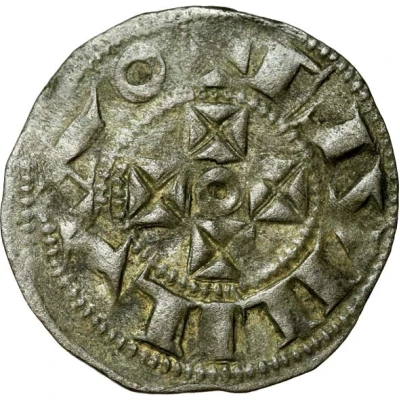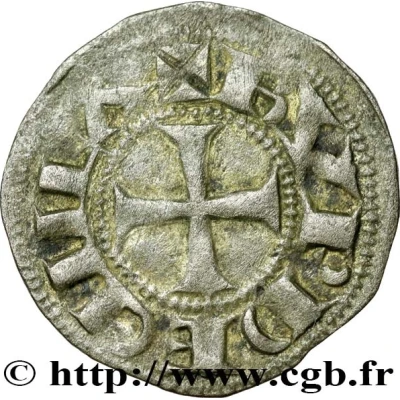


© CGB
Obol - William IX / William X ND
| Billon | 0.62 g | 15 mm |
| Issuer | Duchy of Aquitaine (French States) |
|---|---|
| Duke | William IX (1086-1126) William X (1126-1137) |
| Type | Standard circulation coin |
| Years | 1086-1137 |
| Value | 1 Obol (1⁄480) |
| Currency | Livre |
| Composition | Billon |
| Weight | 0.62 g |
| Diameter | 15 mm |
| Thickness | 0.5 mm |
| Shape | Round (irregular) |
| Technique | Hammered |
| Orientation | Variable alignment ↺ |
| Demonetized | Yes |
| Updated | 2024-10-04 |
| Numista | N#176518 |
|---|---|
| Rarity index | 90% |
Reverse
Cross pattée.
Script: Latin
Lettering: ✠ BVRDEGIILA
Unabridged legend: Burdeghla
Translation: Bordeaux.
Interesting fact
One interesting fact about the Standard circulation coin Obol - William IX / William X ND (1086-1137) from Duchy of Aquitaine (French States) made of Billon weighing 0.62 g is that it was used as a form of currency during a time of great economic and political change in Europe. The coin was issued during the reign of William IX, also known as William the Troubadour, who was the Duke of Aquitaine from 1086 to 1126, and then again by his son William X from 1126 to 1137. During this time, the Duchy of Aquitaine was a powerful and influential state in western Europe, and the Obol coin was an important part of its economy. Despite its small size and relatively low value, the Obol was widely used in trade and commerce, and it remains an interesting and valuable artifact for collectors and historians today.